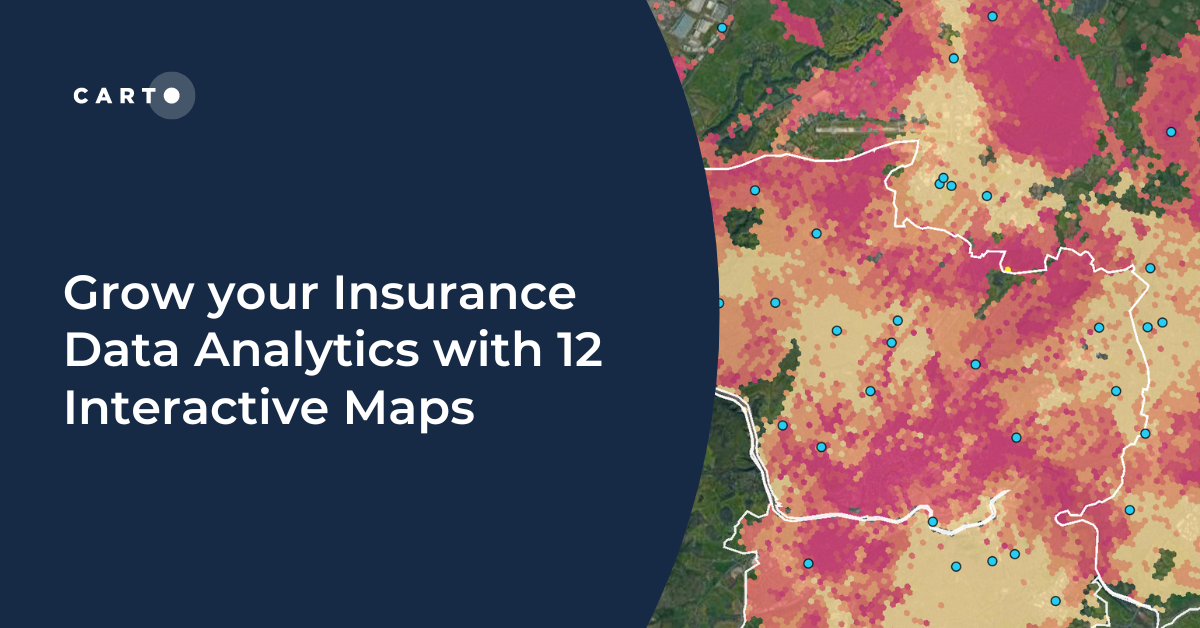Spatial Solutions for the SDGs - COP25

COP (The United Nations Climate Change Conference) is coming to Madrid this year taking place from December 2nd through December 13th. The event brings ten days in which politicians private stakeholders environmentalists and advocates will join forces to explore solutions for tackling global climate change.

Moved last minute from Chile to Madrid due to social unrest COP25 will explore varied environmental agreements - from stopping deforestation and environmental degradation to ocean protection.
This conference is also a key moment to evaluate and review the international endorsement of the seventeen Sustainable Development Goals (SDGs) signed four years ago at COP21 in Paris. These goals are aimed to safeguard our planet the only one we have and are critical for minimizing CO2 emissions and curbing the rise of global temperatures.
At CARTO we spend a lot of time exploring the utility of Spatial Data Science and its application across issues and industries. In anticipation of COP25 and as we are running out of time to act on global climate change we'll be holding a panel on this topic on December 9th. Titled 'Data and Analytics for Climate Change Analysis' this panel at our Madrid headquarters will focus on the data challenges and opportunities for climate change analysis. In addition we will be hosting a conversation on how tech companies can become carbon neutral as we explore ways to increase our impact!
Meanwhile let's explore some of the ways that spatial data analysis can help to achieve the SDGs.
Zero Hunger: Boosting Agriculture
By 2050 the human population is expected to be 9.2 billion. Experts say that as a result of the increase the demand on global agriculture will increase by roughly 60% from current levels.
In order to meet this demand humanity needs to develop more sustainable farming methods as well as techniques for effective distribution. Spatial data analysis can help with this throughout the entire food chain. For example modern data streams can help leaders and legislators to craft data-driven agriculture policies. Farmers at all scales can benefit from live maps that can provide more than 200 data layers with information pertaining to biomass land usage water resources weather conditions. And issues of food insecurity which are a problem in many countries regardless of economic strength can start to be addressed.

Our clients are already taking advantage of these kinds of solutions to make processes such as cropping and harvesting more efficient. These solutions can also help with agricultural monitoring and to improve assessment for investors and financial institutions.
Greener and Cleaner Energy to Boost Development
As The Guardian revealed several weeks ago there are 20 fossil fuel companies that can be directly linked to more than one-third of all greenhouse gas emissions. Moreover these non-renewable resources are limited to a handful of people so there is a need for more affordable accessible and clean renewable energy.
Spatial data analysis is already playing a part in this transformation by building solutions that can smooth the global transition to renewables. Live maps can help users to find the location of alternative fuel stations. Energy industry stakeholders can benefit from better understanding solar and wind power supply curves as well as consumer behavior by neighborhood.

The above examples are just the beginning. As these developments continue Location Intelligence can help to monitor and improve the performance of solar and wind farms to find out the best spots to build new green energy plants and even to forecast and understand weather conditions to be prepared in case of a high energy demand (or a cutoff).
Location Intelligence is also helping to make lives easier for EV users through the visualization of refueling and charging stations as well as parking spots to plug in their vehicle and specialized auto-body shops.

Sustainable Cities and Communities
A key facet in the development of sustainable cities is mobility. Governments can benefit from Spatial Data Analysis to get a better understanding of current and future public transportation routes as the seek to make them more efficient.
Boosting traffic and transit efficiency is critical in reducing greenhouse emissions. Several cities are already taking steps towards this for example developing micro hubs to address challenges around parcel delivery. For addressing challenges like this CARTO has developed Traffico a solution that helps cities to address their urban mobility challenges with crowdsourced data from Waze's Connected Citizens Program.
Furthermore spatial analysis can help courier companies to create processes to methodically build more efficient and more sustainable routes. Delivery companies are also incorporating new transit methods like bikes. Learn more from our recent blog post on transportation route optimization.
With growing concerns about air quality and how it damages our health urban areas need to reduce and control their CO2 emissions whilst controlling the levels of pollution in the air. Many have started wearing masks in different countries across Asia but bad air quality is a problem in most major cities. This challenge linked to the third SDG can also be achieved with solutions such as Urbo.
Developed by CARTO for Telefónica Urbo is a Smart Cities solution already used in several cities across Europe that helps cities to use IoT data from sensors to run key services more efficiently such as the management of street lights waste collection and noise pollution.
Climate change is also increasing the frequency and severity of extreme weather phenomena such as droughts floods and hurricanes which means that we need to work on our resiliency programs to improve emergency planning and adaptability efforts. One of our solutions helped Mexico City to allocate resources to rebuild the city after the 2017 earthquake whilst others are helping governments to better understand the risk in areas where floods and hurricanes are more common or to allocate better humanitarian aid resources.
Achieving the SDGs Together
Achieving the 17 Sustainable Development Goals requires collaboration from all sectors - from the private sector to the public sector academia and non profits. We need to develop partnerships And governments and institutions can help to achieve these goals by releasing open data to boost transparency and to enable development by private entities and individuals as they strive to solve our challenges.
As stated by the UN "data can enable more agile efficient and evidence-based decision-making and can better measure progress on the Sustainable Development Goals." So it is key that this data is open and that Location Intelligence becomes common place in both private and public arenas.
Interested in signing up for our panel discussion on climate change analysis? Register today!









.png)





